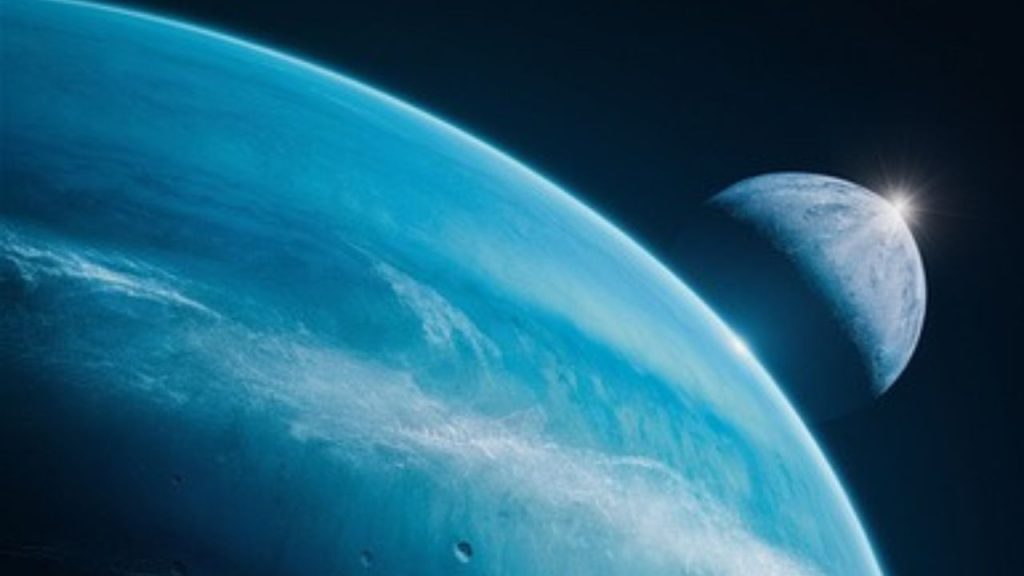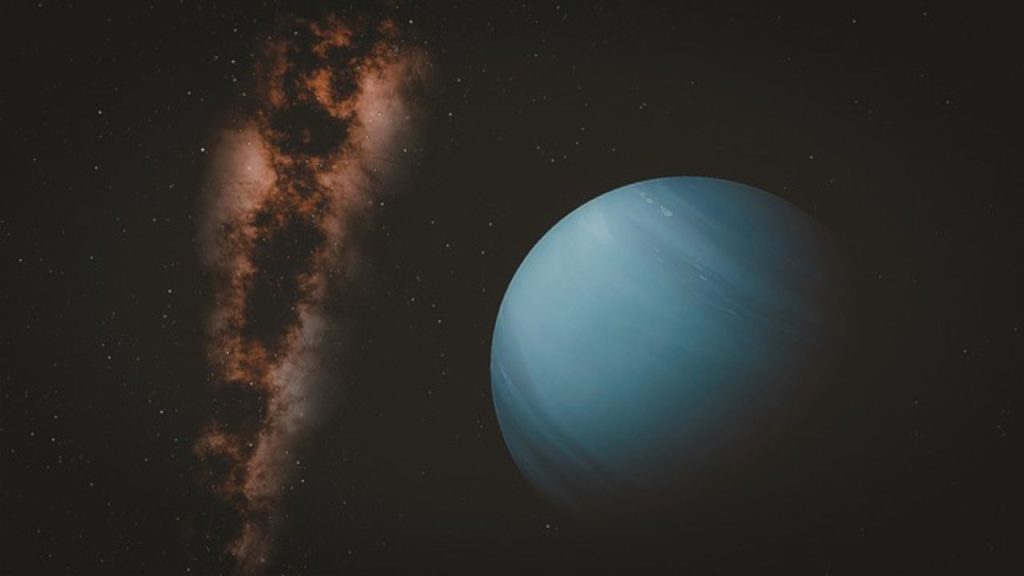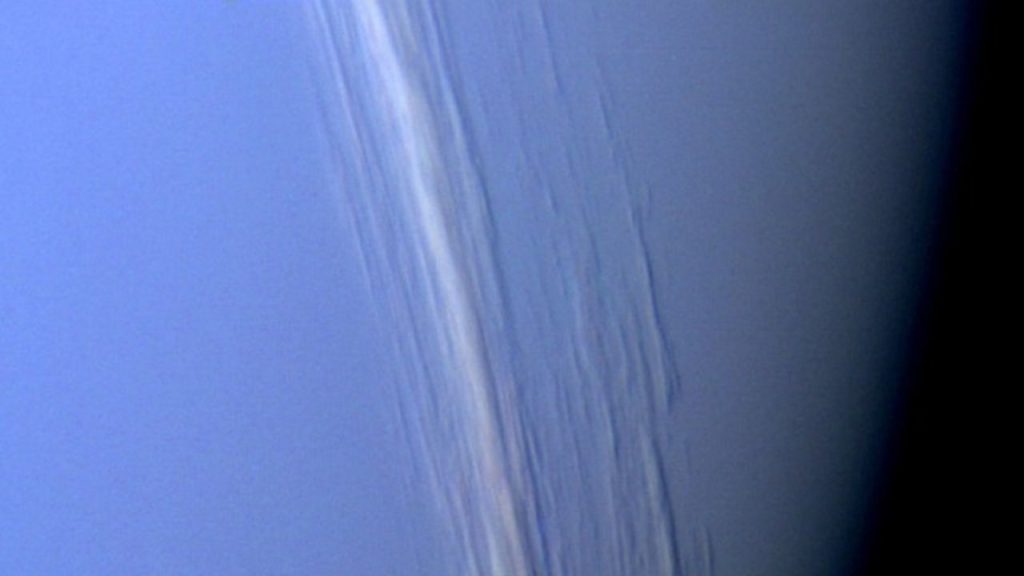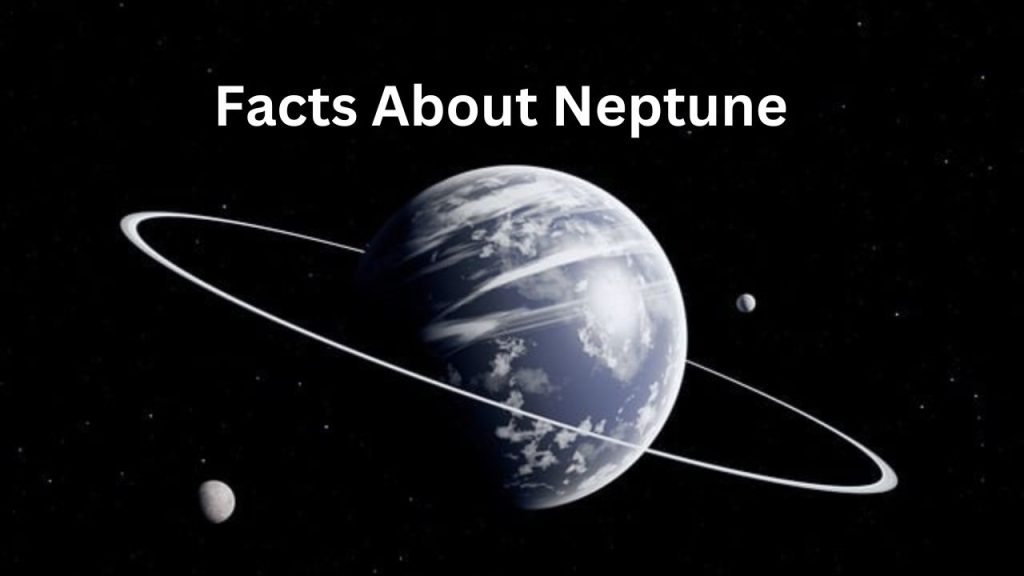Explore amazing facts about Neptune, the farthest planet in our solar system. Learn about its discovery, atmosphere, moons, storms, and unique role in space science.
Interesting Facts About Neptune:
For generations, astronomers and scientists have been fascinated by the cosmic wonder that is Neptune, the eighth and farthest planet from the Sun in our solar system. Neptune is a distinctive and scientifically rich planet because of its vibrant blue hue and turbulent atmosphere. We’ll go over 2000 words of reliable, fact-based information about Neptune in this post, covering its discovery, composition, atmosphere, moons, and much more.
1. Discovery of Neptune

The discovery of Neptune is regarded as an historical astronomical event. Neptune was the first planet whose discovery was confirmed by mathematical calculations instead of observation. The recognition of Neptune’s discovery goes to the French mathematician Urbain Le Verrier, British astronomer John Couch Adams, and German astronomer Johann Galle.
In 1846, the position of Neptune was calculated due to irregularities noticed in the orbit of Uranus, which indicated the existence of another gravitational force. On September 23, 1846, Johann Galle and his assistant Heinrich d’Arrest observed Neptune near the position Le Verrier had predicted.
This was a revolutionary moment in the history of astronomy because it showed that mathematics held the power for unlocking the discovery of planets.
2. Neptune’s Position in the Solar System
And at an average distance of 4.5 billion kilometers, or 2.8 billion miles, it’s the farthest planet from the Sun: light from the Sun would take about 4 hours to reach Neptune, compared to just 8 minutes for Earth.
Also, it is in the “outer planets” category, with Jupiter, Saturn, and Uranus included, all of which are referred to as gas and ice giants. The inner rocky planets (such as Earth and Mars) are dramatically different with a composition dominated by gas and ices.
3. Physical Characteristics of Neptune
Size and Mass
Neptune measures 49,244 kilometers (30,598 miles) in diameter, the fourth largest in the solar system. Though it’s smaller in diameter than Uranus, it’s more massive, at about 17 times the mass of Earth. And that makes Neptune the densest of the gas and ice giants.
Composition
Neptune is largely built of hydrogen, helium, and methane. The methane in its atmosphere absorbs red light, giving the planet its stunning blue hue. Beneath the atmosphere lies a mantle of water, ammonia, and methane ices, surrounding a rocky core.
4. Dynamic Atmosphere

Neptune’s atmosphere is a stormy and turbulent place. It has the most energetic winds in the solar system-the winds on Neptune top 2,100 kilometers per hour (1,300 miles per hour).
Great Dark Spot
One of the most famous features of Neptune is the Great Dark Spot, discovered by the Voyager 2 spacecraft in 1989. That storm was like Jupiter’s Great Red Spot but approximately the size of Earth and showed Neptune has active atmospheres. In the 1990s, however, when Hubble peered at Neptune, the Great Dark Spot had vanished, indicating that these storms are transitory.
5. Neptune’s Moons
Neptune has 14 known moons, but the largest and most intriguing is Triton.
Triton
– Retrograde Orbit:
Triton orbits Neptune in a retrograde direction that is parallel to Neptune’s system motion, indicating the moon was most likely captured from the Kuiper Belt.
– Geological Activity:
It is the coldest object in our system, with surface temperatures of about -235°C (-391°F). But it shows cryovolcanism where geysers eject nitrogen gas into space.
– Future Fate:
Triton will either crash into Neptune or fragment into a ring system as it approaches the planet in a slow spiral.
Neptune’s moon system also includes several smaller moons like Proteus, Nereid, and Naiad, but Triton stands out due to its special qualities.
6. Neptune’s Rings
Neptune’s ring system is faint and incomplete, comprising five main rings: Galle, Leverrier, Lassell, Arago, and Adams. These rings are mostly composed of dust particles and ice chunks.
The rings were detected from groundbased observations in the mid-1980s, but Voyager 2’s close encounter with the planet provided much needed confirmation in 1989. Neptune’s rings are fainter and thinner than those of Saturn, which have a denser and more radiant profile.
Ring Arcs
One peculiar characteristic of Neptune’s rings is that some of them have “ring arcs,” which are clumps of material concentrated in certain sections. Scientists still do not understand why these arcs do not spread evenly instead of appearing as stable arcs along the rings.
7. Neptune Exploration

Voyager 2 Flyby
Only one spacecraft has visited the planet: Voyager 2, which made a fly-by of the planet on August 25, 1989. The mission provided many useful data about Neptune’s atmosphere, rings, and moons.
Voyager 2’s flyby yielded images of the Great Dark Spot, geysers on Triton, and the faint rings. No spacecraft has returned to Neptune since then; what is known was gathered from this one mission.
Scientists have proposed several future missions to Neptune, including orbiters and probes. These missions aim to study the planet’s atmosphere, magnetic field, and icy mantle in greater detail. However, such missions are challenging due to Neptune’s vast distance and extreme conditions.
8. Neptune’s Magnetosphere
Neptune’s magnetic field is extremely strong and seemingly odd. It is tilted at an angle of 47 degrees relative to the planet’s rotational axis, and its magnetic center is offset from the planet’s core by approximately 55%.
9. Neptune’s Year and Day
Length of a Day
A day on Neptune (one rotation on its axis) is about 16 hours and 6 minutes. Its fast rotation has a big hand in making the wind speeds so high and its weather patterns so dynamic.
Length of a Year
Neptune takes roughly 165 Earth years to complete an orbit around the Sun. In other words, since it was discovered back in 1846, Neptune has only completed a single full orbit, occurring in 2011.
10. Temperature on Neptune
With typical temperatures of roughly -214°C (-353°F), Neptune is one of the coldest planets in our solar system. Relative to the Sun, Neptune emits more heat than it absorbs, which has been attributed to residual heat from its original formation.
Extreme winds and storms are caused by the convection that is fueled by this interior heat.
11. Neptune and the Kuiper Belt
Neptune has a strong influence on the Kuiper Belt, where so many cold bodies orbit beyond itself. Its gravitational gravitational influence has shaped the orbits of many of the icy bodies and lots of Kuiper Belt objects, including Pluto.
Actually, Pluto and Neptune are in a 3:2 orbital resonance, meaning that for each three orbits of Neptune, Pluto makes two. This keeps the two objects from colliding.
12. The Color of Neptune

Neptune has an incredibly deep blue color. The methane it contains in its atmosphere contributes to this color, but there is still a mysterious ingredient that scientists think completes the color, making it more intense than that of Uranus, which shares many characteristics with Neptune.
13. Gravity at Neptune
Because of the slightly higher gravity of Neptune 11.15 m/s² than on Earth (which is 9.8 m/s²), a person weighing 100 pounds on Earth would weigh roughly 114 pounds on Neptune.
14. Interesting Trivia About Neptune
– Origin of Name:
The Roman sea god is the inspiration behind Neptune’s name. Its vivid blue hue is reminiscent of ocean waters. The first sightings Galileo Galilei saw Neptune in 1612 and 1613 but believed it to be a fixed star, even though it wasn’t formally discovered until 1846. In terms of size, composition, and atmospheric conditions, it is frequently referred to as Uranus’ twin.
15. Why Neptune Matters
Neptune is the entrance to the outer regions of our solar system and beyond. Learning about Neptune will teach scientists about the ice giant planets, which are quite ubiquitous in other stellar systems.
Its features, from the dynamic atmosphere to the captured moon Triton, give insights into planetary formation, migration, and evolution. Read about Avoid Downloading Malicious Code.
Conclusion
Neptune is a world of extremes in its scorching winds, ice temperatures, and stormy tempests. Yet, it is one of the least explored planets and still captures the imagination of scientists and space enthusiasts. Future missions to Neptune might reveal so many more secrets about this enigmatic ice giant that will enrich the knowledge we get from the universe.
To plunge into facts about Neptune is to gain an insight into this distant world but also into the broader workings of our solar system and the universe beyond.




